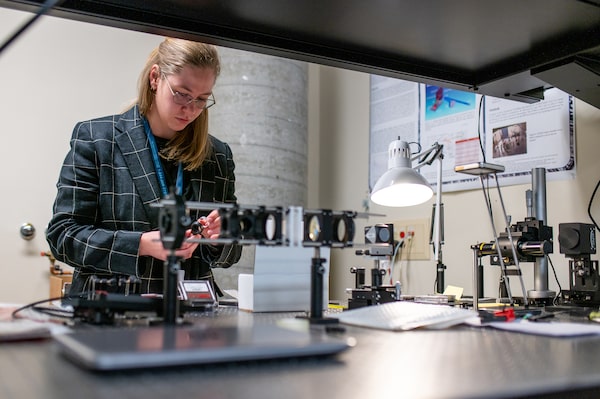
NRC Adaptive Optics Developer Maaike van Kooten works on an adaptive optics testing set up at the Dominion Astrophysical Observatory, part of the Herzberg Astronomy and Astrophysics Research Centre of the National Research Council of Canada.James MacDonald/The Globe and Mail
Driving north along the Patricia Bay Highway, the green cube with its angular sides and cascading green geometrical pattern stands out against the forest of the Saanich Peninsula, just north of Victoria.
Within those towering walls of the new integration and test facility of the Herzberg Astronomy and Astrophysics Research Centre, an astronomical instrument will be assembled later this year. Capable of correcting for minute atmospheric turbulence, the Narrow Field Adaptive Optics System for the Thirty Metre Telescope (NFIRAOS, for short) will allow astronomers to look farther and more precisely into our universe than ever before – and continue a scientific legacy that began more than 100 years ago.
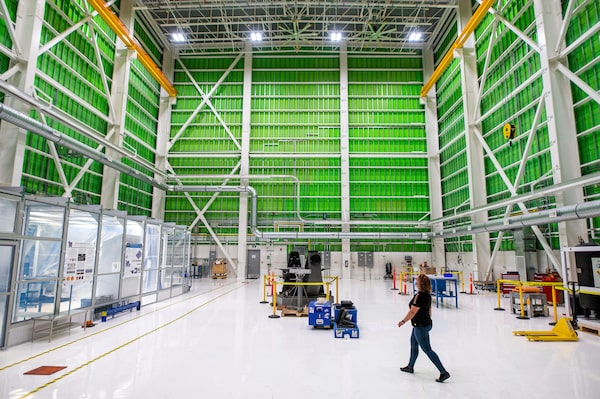
Jenny Atwood an NRC Optical Engineer walks across the main floor of the Integration and Test Facility.James MacDonald/The Globe and Mail
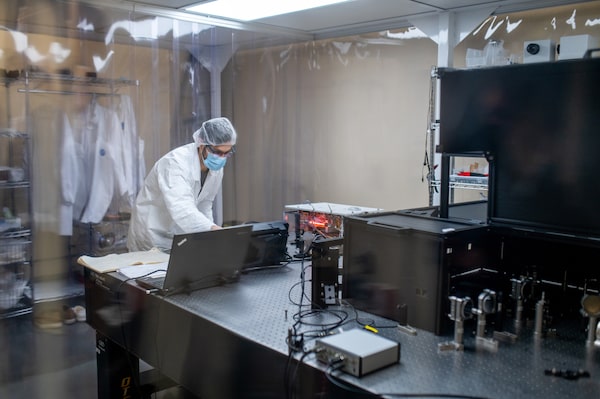
Adam Johnson, a UVic Mechanical Engineering PhD student, watches over a spectra measurement device called a Fourier Transform Spectrograph in the NEW EARTH Labratory.James MacDonald/The Globe and Mail
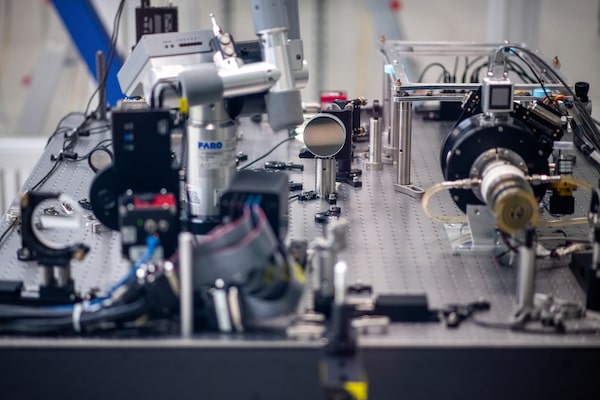
The Subaru Pathfinder Instrument for Detecting Exoplanets and Retrieving Spectra, or SPIDERS.James MacDonald/The Globe and Mail
Also part of the centre – the country’s premier astronomical and astrophysical research facility – is the Dominion Astrophysical Observatory. Completed in 1918 on top of what is now known as Observatory Hill, the DAO was the brainchild of Canadian astronomer John S. Plaskett, whose 1.83-metre Plaskett Telescope still gazes skyward from the summit.
“Plaskett’s major scientific contribution was that he was the first to measure the mass of the galaxy,” observatory director James Di Francesco says. “One hundred years ago, we didn’t even know that there were other galaxies. What we saw in the night sky, we thought was the whole universe.”
The Herzberg centre is run by the National Research Council of Canada. Through it, around 100 astronomers, scientists and astrophysicists are engaged at the forefront of astronomical discovery, utilizing advanced technology such as the James Webb Space Telescope.
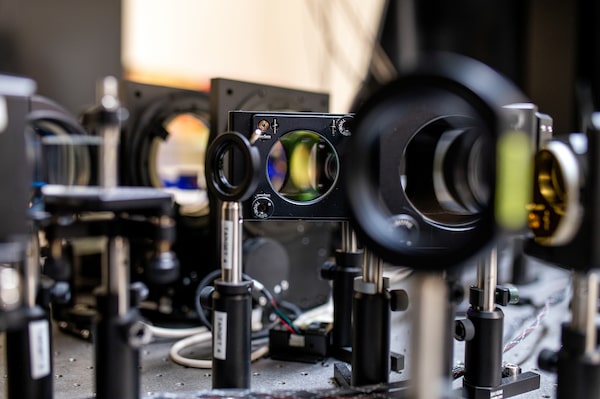
Lenses and mirrors of an adaptive optics test set up.James MacDonald/The Globe and Mail
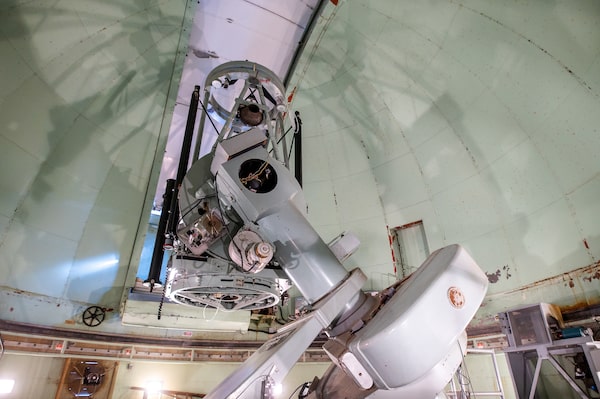
One of the telescopes used at the Dominion Astrophysical Observatory, part of the Herzberg Astronomy and Astrophysics Research Centre of the National Research Council of Canada. Photographer: James MacDonaldJames MacDonald/The Globe and Mail
“We support Canadian users of the telescopes, astronomers at various universities and their students,” Mr. Di Francesco says. “We also build instruments for these telescopes so they are at the forefront of technological capability, capturing as much of the light as possible and using it for scientific purposes.”
Light and its capture are key to any type of astronomy. “Just looking at the light, you only get a limited amount of information,” Mr. Di Francesco explains. “But the [light] spectrum can tell you all about how things are moving, what they are made of, what their temperature is. … It has been a fundamental way of exploring the universe for over a century.”
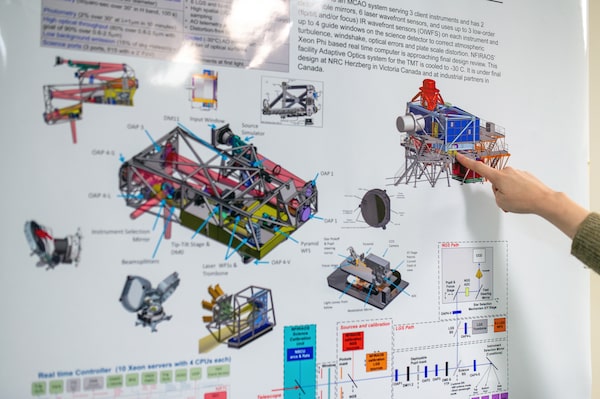
Kate Jackson, an adaptive optics system engineer, points at a poster and diagram of the Narrow Field InfraRed Adaptive Optics System or NFIRAOS.James MacDonald/The Globe and Mail
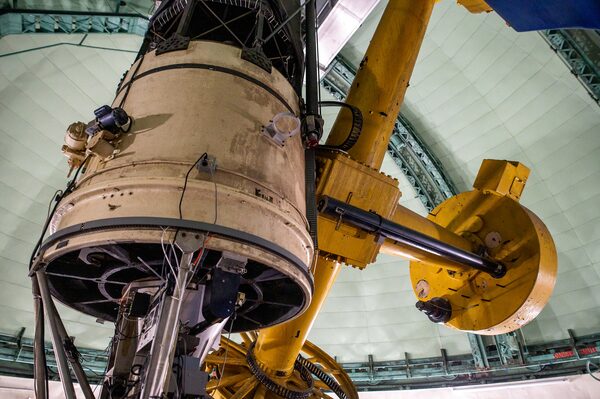
The original 1.83 meter, Plaskett telescope at the Dominion Astrophysical Observatory, part of the Herzberg Astronomy and Astrophysics Research Centre of the National Research Council of Canada. Photographer: James MacDonaldJames MacDonald/The Globe and Mail
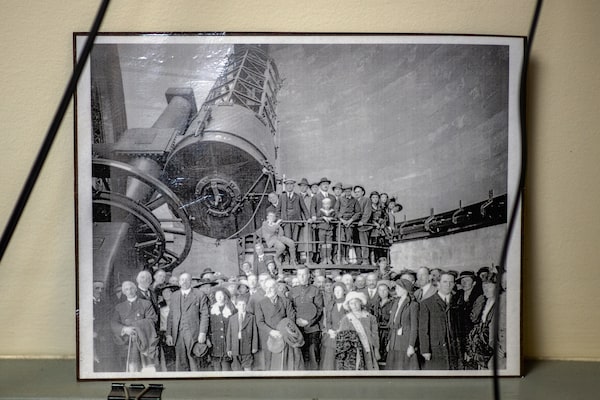
A photo hangs in the telescope dome of visitors posing with the original 1.83 meter Plaskett telescope, with Plaskett himself in the centre of the front row, at the opening of the Dominion Astrophysical Observatory in 1918.James MacDonald/The Globe and Mail